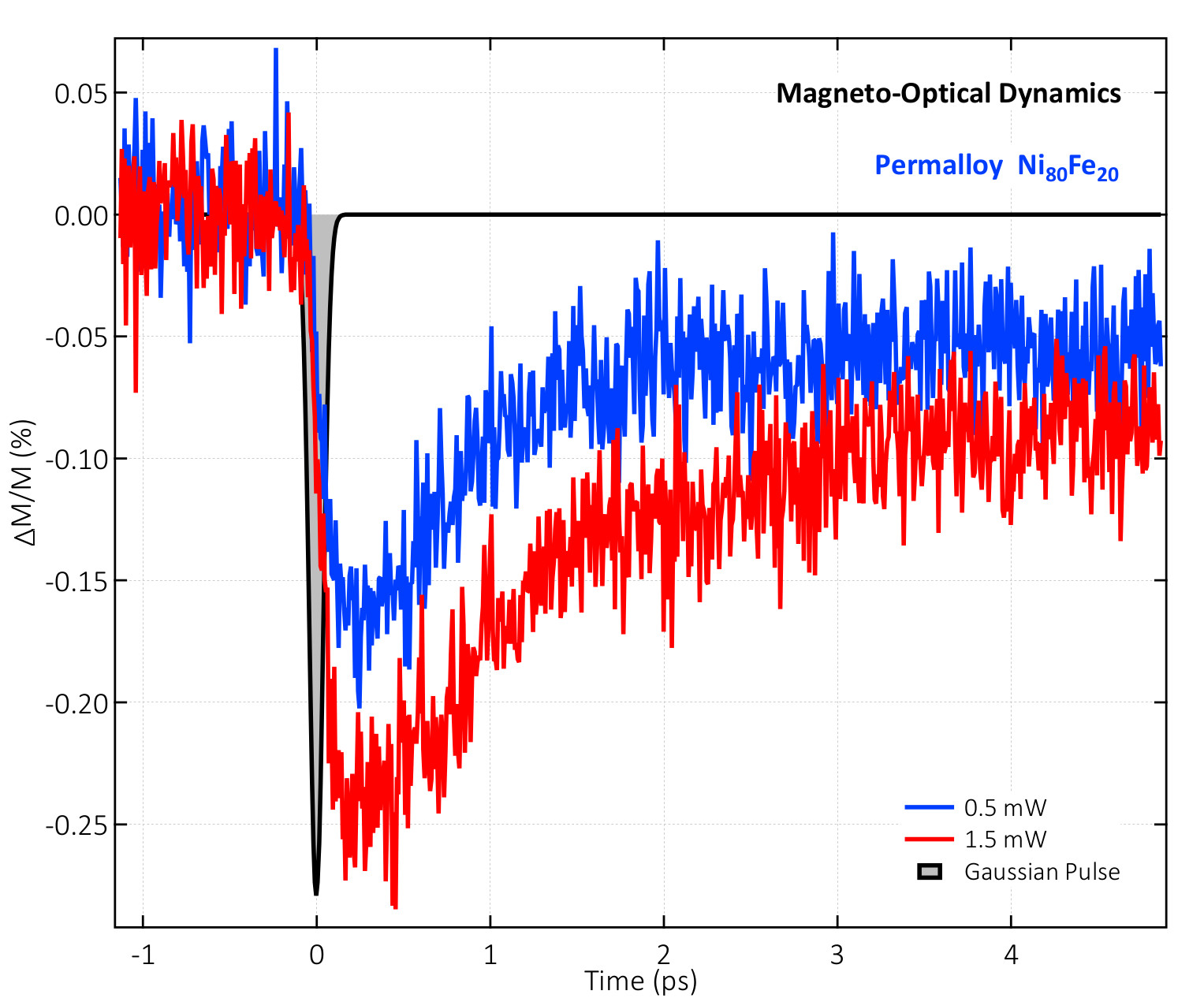
|
Antonio Caretta Magnedyn at FERMI Topics: News & CV |
ResultsI am very proud to show our most recent achievement on the IDK laboratory: Single-shot amorphization on phase-change nanoparticles. This work, with first author PhD Barbara Casarin, demonstrates for the first time that the switching process of phase-change nanoparticles -a crystal-to-amorphous reversible transition- is more efficient than in thin films. In the article you will not only find the accurate method used to investigate the process but also the underlying physics. First experiments:Here below a plot of the demagnetization dynamics in Fe20Ni80 film.  The experiment is performed in longitudinal MOKE configuration, probing at 400 nm and exciting at 800 nm. Time resolution is approximately 100 fs. Magneto-optical experiments exploit the Faraday and the Kerr effects, where the polarisation state of the probe is sensible to the magnetisation component along the light k-vector. As shown above, it is thus possible to estimate the exact direction (in this case in-plane) and absolute value (-25%) of the sample magnetisation. Other tests on Pr0.5Ca1.5MnO4:In order to measure both the electric field amplitude and direction of the probe pulse, MOKE and Faraday experiments are performed via a balanced photo-detection scheme. Such detection scheme is actually useful to study any material anisotropy, like twin domains, crystal birefringence, structural distortions or charge-orbital-ordering. Here below we show the reflectivity and birefringence dynamics in PCMO: interestingly, while the first (DR/R) shows clear signatures of a (photo-induced) insulator-to-metal transition, the second reports the nearly instantaneous destruction of the charge-orbital-ordering state. |
